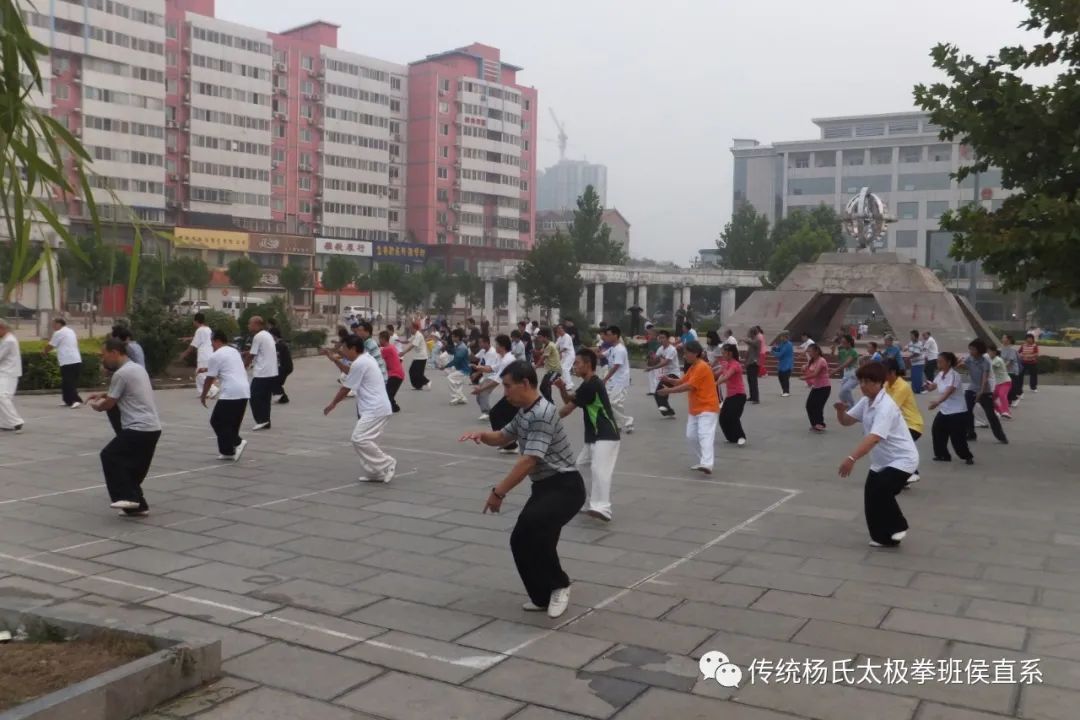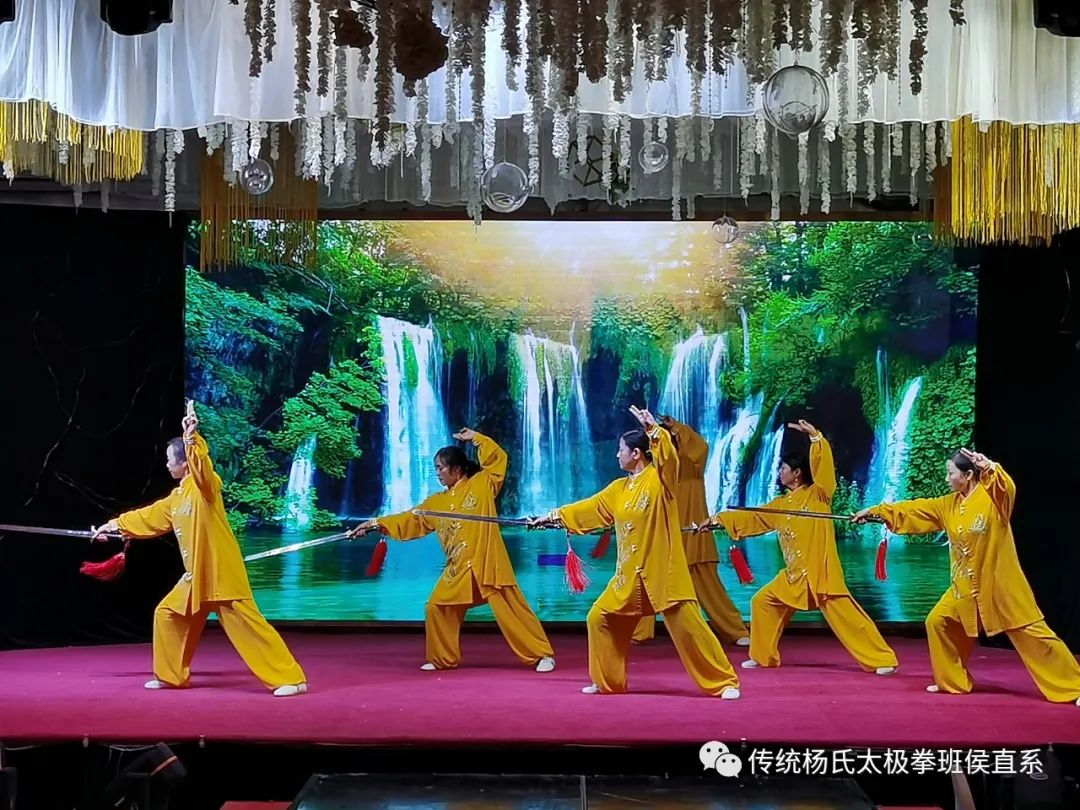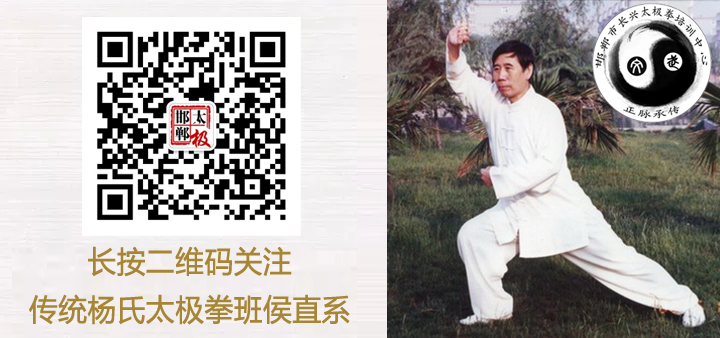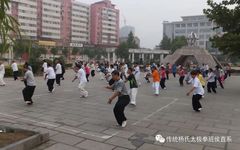1. Why is it called Tai Chi Chuan?
A. The Tai Chi diagram divides Yin and Yang, and Tai Chi Chuan is situated between emptiness and fullness, hence the name Tai Chi Chuan.
B. The Tai Chi diagram divides Yin and Yang; Tai Chi Chuan emphasizes full-body relaxation, leading with the crown, containing the chest and pulling the back, sinking the shoulders and dropping the elbows, with Qi sinking to the Dantian, achieving the state of upper emptiness and lower fullness (especially with a hollow chest and a full abdomen), thus it is called Tai Chi Chuan.
C. The Tai Chi diagram is circular, and the movements of Tai Chi Chuan are often arc-shaped, also circular, hence the name Tai Chi Chuan.

2. What does Qi refer to?
Some practitioners feel “Qi” flowing while practicing, and this concept is often discussed in Tai Chi literature. What does this “Qi” refer to?
It refers to the state when a person moves in a deeply relaxed and still condition, where nerve control, muscle contraction, biochemical and bioelectric changes affect the opening of capillaries. The nerve receptors in these blood vessels are stimulated, sending excitatory impulses to the sensory center, resulting in sensations of numbness, tingling, and warmth; this is “Qi”, also known as “internal Qi”.
This “Qi” is beneficial for fitness.
3. What are the benefits of using intention to guide movements?
The movements of Tai Chi Chuan are performed under the guidance of consciousness, meaning they are activated under the control of the brain. Practicing with intention rather than force is the simplest method and helps avoid stiffness, which is crucial for popularization. For example, the simple movement of “starting posture” must be guided lightly by consciousness to raise both arms forward, then squat down, bend the knees, and relax the waist, allowing the elbows to drop and gently press down with the hands while keeping the upper body upright. Once proficient, one can further lower the “Qi” in the upper body to the lower abdomen while pressing down with the hands and exhaling, with the feet gently gripping the ground as the body squats, creating the sensation of “Qi sinking to the Dantian”. However, for beginners or those who do not feel the flow of Qi and blood, simply following the intention is sufficient. This aligns with the previously emphasized principles of “intention moves the body” and “the essence lies in the use of intention” in Tai Chi practice.
4. How many styles of Tai Chi Chuan are there?
Tai Chi Chuan can be divided into three systems and five categories.
Three systems: A. Large frame – Chen style Tai Chi Chuan, Yang style Tai Chi Chuan, typically adopts a large frame. Its characteristics are expansive and graceful movements, combining lightness and stability.
B. Medium frame – Represented by Wu style Tai Chi Chuan, its frame size is moderate, emphasizing softness.
C. Small frame – Represented by Sun style and Wu style Tai Chi Chuan, its movements are compact and agile.
Five categories: A. Yang style Tai Chi Chuan; balanced, gentle, and expansive.
B. Chen style Tai Chi Chuan; a combination of hardness and softness, fast and slow.
C. Wu style Tai Chi Chuan; soft and compact, moderate in size.
D. Wu style Tai Chi Chuan; agile movements, light steps.
E. Sun style Tai Chi Chuan; similar to Wu style, characterized by opening and closing movements, compact and agile.
Simplified Tai Chi Chuan, the 88-form Tai Chi Chuan, is primarily compiled from Yang style Tai Chi Chuan by the National Sports Administration.
5. Why is Tai Chi Chuan also called the Thirteen Postures?
The Thirteen Postures refer to the Five Elements and Eight Trigrams. The Five Elements are Metal, Wood, Water, Fire, and Earth. The Eight Trigrams are Qian, Kun, Kan, Li, Xun, Zhen, Dui, and Gen.
The five steps of Tai Chi Chuan are advancing, retreating, looking left, looking right (looking refers to the gaze, here interpreted as steps), and centering.
The eight hand techniques in Tai Chi Chuan are: Peng, Lu, Ji, An, Cai, Niu, Zhou, and Kao, distributed in the southeast, northwest, northeast, southwest, and so on. These eight directions combined with the five steps are collectively referred to as the Thirteen Postures, meaning thirteen methods.
6. Where is the Dantian located?
A. Three inches below the navel is the Dantian.
B. The Dantian is located in front of the kidneys and behind the navel. The Dantian refers to the lower abdomen.
7. How can one achieve unity of intention and Qi?
“Qi” and consciousness must also have tension and relaxation, appearing and disappearing, gently guiding. For example, in the movement of “embracing the knee and twisting step” with the pushing palm, the consciousness gradually intensifies as the palm reaches its endpoint, focusing on the fingertips, where the sensations of numbness and tingling from the “Qi” become significant; as the arm retracts, the consciousness should transition from prominent to subtle, allowing for slight attention to the “Qi” or simply forgetting about it altogether. This is known as the “unity of intention and Qi”.
For those who do not feel “Qi” or have an unclear sensation of “Qi”, practicing with the method of “guiding the body with intention” is recommended.

8. What are the hand shapes in Tai Chi Chuan?
A. Palm; broadly, the palm refers to the entire hand, narrowly, it refers to the area in front of the wrist joint, behind the base of the little finger. The palm in Tai Chi Chuan emphasizes natural extension, with fingers not tightly closed or spread apart, leaving a slight gap between them.
B. Fist; the fist should be loosely held, tightening rapidly at the endpoint of force, then quickly relaxing back to a loose grip.
C. Hook; there are two types, one where the thumb tip meets the index finger and the little finger tip, while the middle and ring fingers come together; the other has all five fingertips meeting. Both are acceptable.
9. What are the requirements for the shoulders, elbows, and wrists in Tai Chi Chuan?
For upper limb posture, the most important aspects are “sinking the shoulders and dropping the elbows” and “sitting the wrists”. The key is to sink the shoulders or relax them.
Sitting the wrists means that when in position or when the palm pushes to the endpoint, the wrist should slightly drop and settle, allowing the palm and fingers to slightly extend straight; this brief process is called “sitting the wrist”.
10. What are the requirements for the mouth in Tai Chi Chuan?
A. The lips should be naturally closed or slightly open.
B. The teeth should not be clenched, maintaining a natural gap.
C. The tongue should be naturally flat or the tip lightly touching the upper palate.
11. Summary of requirements for various body parts in Tai Chi Chuan
The head should maintain a vertical posture relative to the horizontal line, as if a rope is suspending it from above.
“Containing the chest and pulling the back” means the chest should not be forcefully protruding, and the back should be naturally relaxed.
The waist should be relaxed, hanging, and straight. The waist is the axle; “if you do not practice the waist, your skills will never be high”.
The legs should clearly distinguish between emptiness and fullness during transitions, being steady and agile. “The root is in the feet, the power comes from the legs”. “The feet account for seventy percent, the hands for thirty percent”.
12. The stepping and leg techniques in Tai Chi Chuan
Tai Chi Chuan includes horse stance, bow stance, T-step, empty step, and the step used in the downward palm movement. The leg techniques in Tai Chi Chuan include foot separation, foot stamping, kicking, pushing, sweeping, and jumping (where both feet leave the ground and the legs kick).
13. The gaze in Tai Chi Chuan
“Hands, eyes, body, method, and steps” are the five key points of martial arts training. How should one pay attention to the gaze?
In each movement, typically one hand is offensive while the other is defensive. The gaze always follows the movement of the attacking hand, hence the saying “the eyes follow the hands, the steps follow the body”.
14. The environment and time for practicing Tai Chi Chuan
It is best to practice in a sunny, fresh-air environment with a flat surface, either outdoors or indoors in a quiet setting. The best times are at dawn or dusk. The amount of exercise should follow the principle of “do not practice to the point of exhaustion”. Rest when tired.
15. What should be noted before practicing Tai Chi Chuan and after finishing?
Before practicing Tai Chi Chuan, one can take a walk and then stretch the limbs and torso, such as bending down to stretch the legs and taking a few deep breaths. This should take about 3-5 minutes.
After finishing, maintain the same mental focus as during practice, walk slowly for 3-5 minutes, then return to normal activities.

If there are any copyright issues, please contact the original author through the backend.The articles published are for learning and reference only.Please practice under the guidance of a professional teacher.

Official website: http://www.yunshuiwang.com



